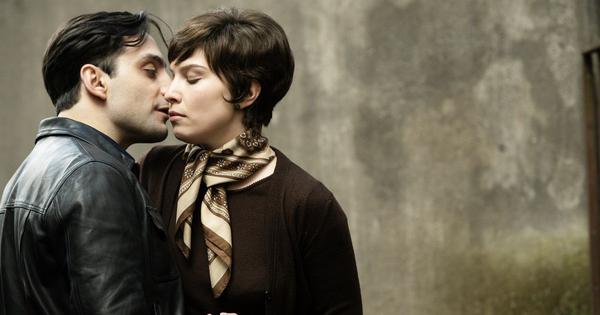
One of the most striking motifs in The Monster of Florence is a top-angle view of vehicles snaking along roads after sundown. The single shaft of light making its way towards darkness – the Italian series on Netflix similarly seeks to illuminate the mysteries surrounding one of Italy’s most notorious serial killers.
This quest comes with the knowledge that the murkiness may never be cleared. The limited series isn’t about finding the man who, between 1968 and 1985, murdered at least eight couples while they were having sex in their vehicles. The victims were shot by the same weapon. All the women were mutilated.
The perpetrator was neither caught nor properly identified. The Monster of Florence, directed by reputed Italian filmmaker Stefano Sollima and written by him and Leonardo Fasoli, takes refuge in the Rashomon effect. The show lines up several suspects, replays the same incident from various angles, and shifts perspectives between the characters.
In 1985, after hearing about the latest murder, magistrate Silvia (Liliana Bottone) remarks that the perpetrator has to be a misogynist. Silvia and her team revisit older cases, correctly surmising that the brutal slayings have a longer trail than is apparent.
The slayings are rooted in a quadrangular relationship. The brothers Salvatore (Valentino Mannias) and Francesco (Giacomo Fadda) get involved with Barbara (Francesca Olia) and her feckless husband Stefano (Marco Bullitta). Salvatore emerges as the likeliest killer, but the evidence against him is weak, as it is against Francesco.
Among the other suspects are members of an underground club of voyeurs and a man with fetishistic tendencies. News of the murders brings out the basest of instincts in men, while also exposing existing sexual quirks.
The four-episode series barely qualifies as a police procedural – in reality, the police force were heavily criticised for their inability to catch the killer. Rather than exposing the gaps in the investigation, The Monster of Florence sets out to explore the social conditions that produce the serial killer.
The crimes takes place in a culture of normalised chauvinism against women, sexual exploitation and misguided notions of family honour. Characters who appear immoral are provided with contexts for their actions. The overall emphasis on aggressive masculinity warps the minds of at least one of the key suspects.
The initially plodding pace picks up speed once the makers reveal their ambitions. After three episodes that are refreshingly discreet in terms of the violence done to the women, the series succumbs to gratuitous imagery in the final episode.
Stefano Sollima is one of Italian cinema’s most accomplished stylists, with a proven inability to create thrilling face-offs, stage brilliant night-time scenes and maintain a firm hold on suspense. The writing in The Monster of Florence never quite matches the period detailing, production design and atmospheric cinematography by Paolo Carnera (who also shot Sollima’s superb Adagio in 2023).
Sollima lingers on moments as if to draw attention to the movie-worthy visuals. The always impeccable-looking show shares with David Fincher’s movie Zodiac (2007) an overwhelming interest in craft over substance, a preference for the hunt rather than the hunter.
The question of who actually slaughtered the couples falls by the wayside. The Monster of Florence falls frustratingly short of coming closer to the killer’s identity than others have in the past. Sollima leaves us with ravishing visuals, a couple of sharp performances (especially Valentino Mannias’s creepy Salvatore) and the half-baked suggestion that sometimes, ambiguity is the only truth.
📰 Crime Today News is proudly sponsored by DRYFRUIT & CO – A Brand by eFabby Global LLC
Design & Developed by Yes Mom Hosting






